Visité una fábrica de calzado de seguridad y participé en la producción 🥾 / I visited a safety footwear factory and participated in the production of safety shoes.
Hola queridos *Hivers feliz inicio de semana, espero que haya sido un día bastante productivo y lleno de muchas bendiciones. En esta ocasión estaré compartiendo con ustedes una visita que tuve hoy a un lugar donde voy a estar asistiendo recurrentemente. Fui a una fábrica donde se producen calzados de Seguridad Industrial, es decir, zapatos, botines y botas para trabajar en industrias. Este tipo de calzados se utilizan para prevenir accidentes laborales , pues al estar continuamente cerca de maquinaria o de mercancía pesada, siempre se corre el riesgo de un accidente laboral, y los pies muchas veces suelen tener una alta probabilidad de salir afectados. Hasta el día de hoy no era algo que yo le tuviera interés, pero ahora lo veo desde un punto de vista distinto. Actualmente la fábrica de encuentra reaperturando sus puertas después de un tiempo cerrada.
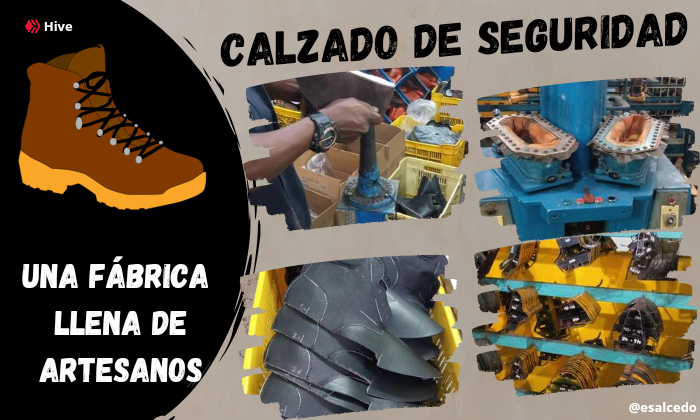
Cuando llegué estaban unos artesanos que habían laborado muchos años en el lugar, en su mayoría personas ya maduras pero con muy buena vitalidad. A pesar de contar con maquinaria industrial, todos los procesos necesitan de la manipulación del hombre y he aquí la importancia de cada uno de ellos.
Debo confesar que me gratificó mucho ver cómo desde cero creaban un calzado, siempre vemos ya el producto terminado, pero no los procesos por los cuales debe pasar antes de estar listo. Fue emocionante ver el paso a paso y hasta de curioso metí la mano para prestar "apoyo" en la fabricación de unas botas.
Explicaré rápidamente el proceso de producción:
- Lo primero es según las especificaciones del pie de la persona, buscar las medidas exactas para cortar el cuero del calzado, esto se realiza en la fábrica mediante unos moldes que por la parte inferior tienen unas cuchillas para cortar el cuero, se colocan encima del mismo sobre una máquina de prensa y se baja hasta que se realice el corte. Luego de ello se revisa cada pieza y se enumera.
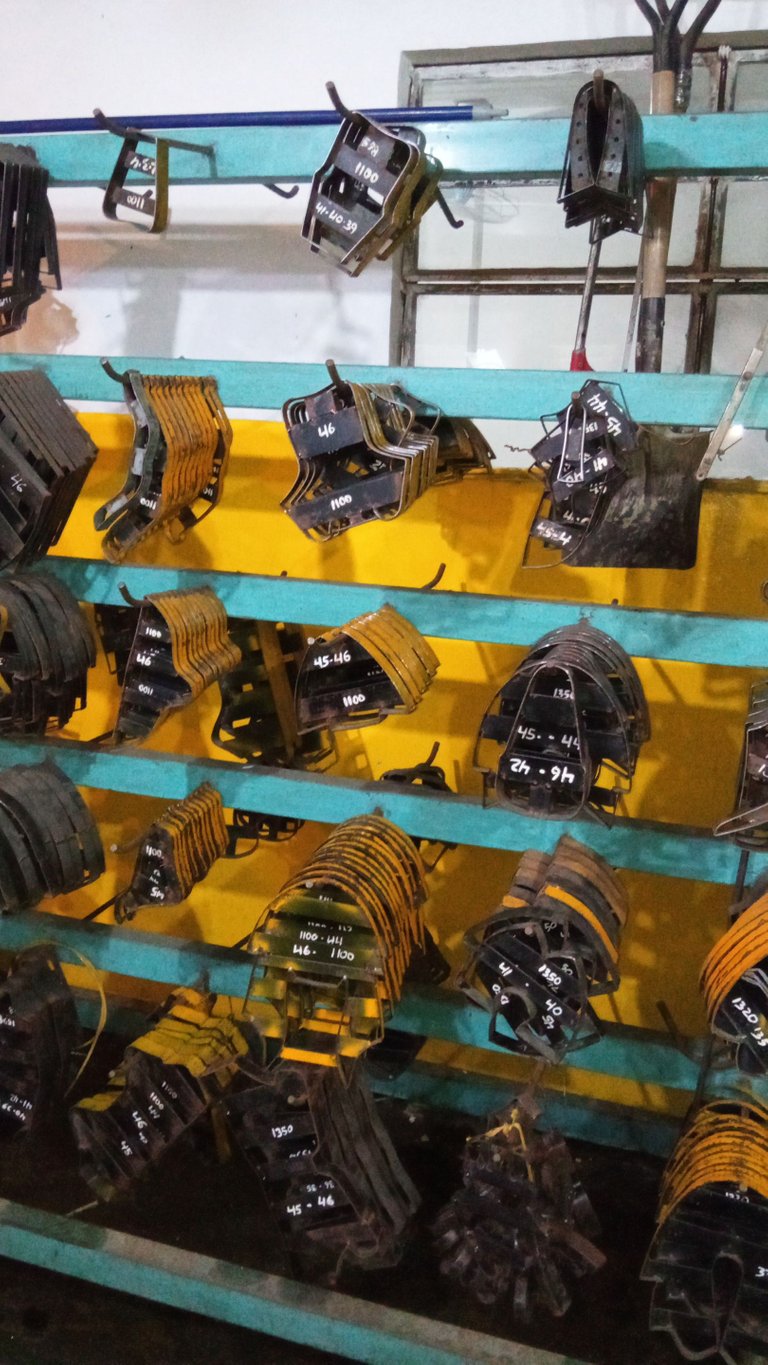
🏭
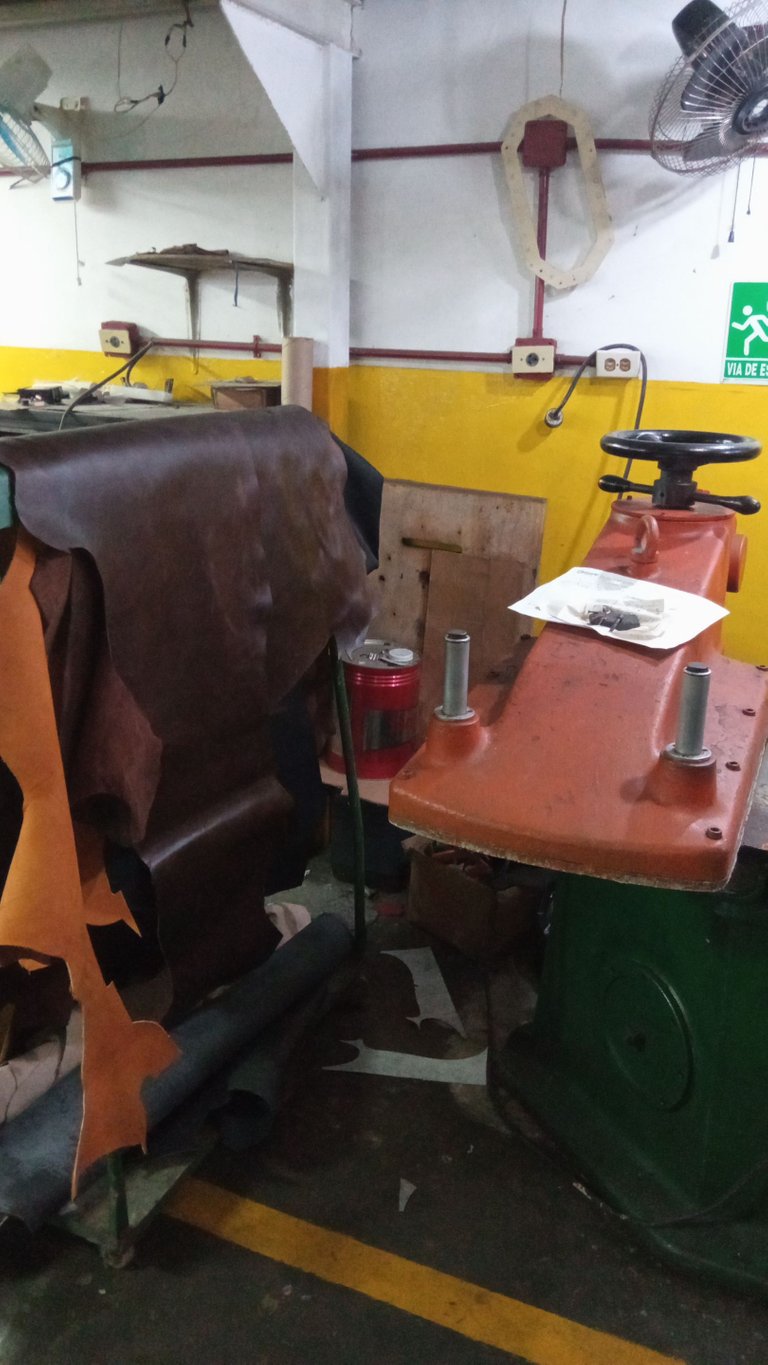
🏭
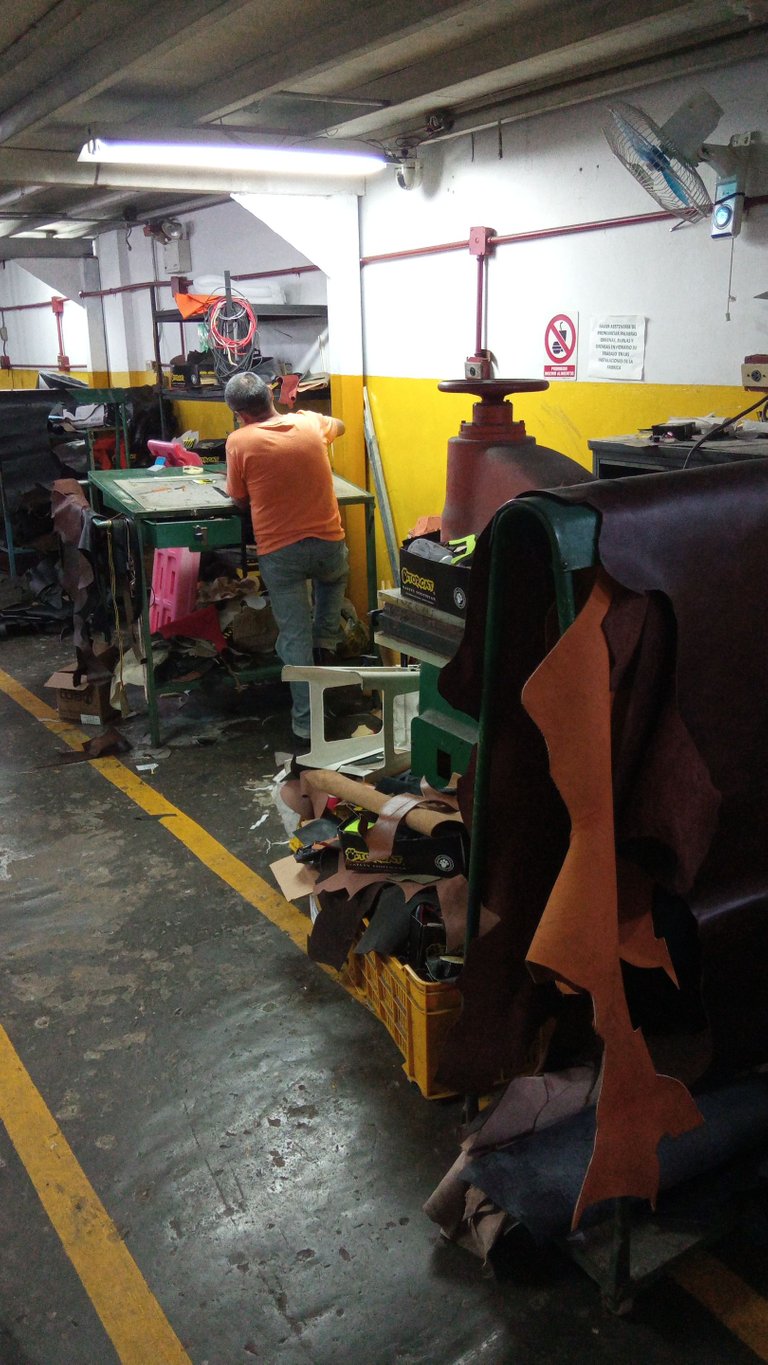
- De ahí pasa al taller de costura en dónde se ensamblan todas las partes enviadas por el artesano que previamente las había cortado, se le añade una suela y se comienzan a unir. Aquí otro equipo de artesanos mediante pega y costura unen todas las piezas hasta para ir formando el calzado.
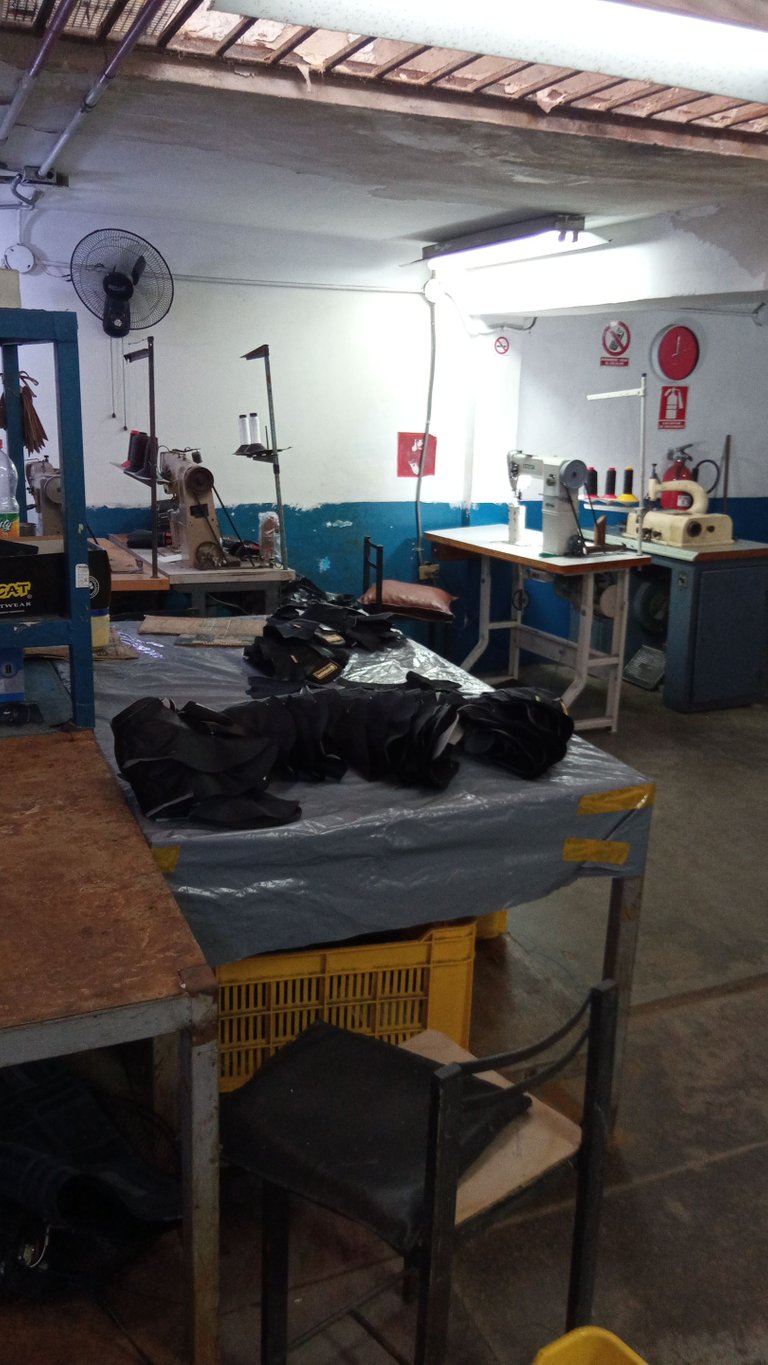
🏭
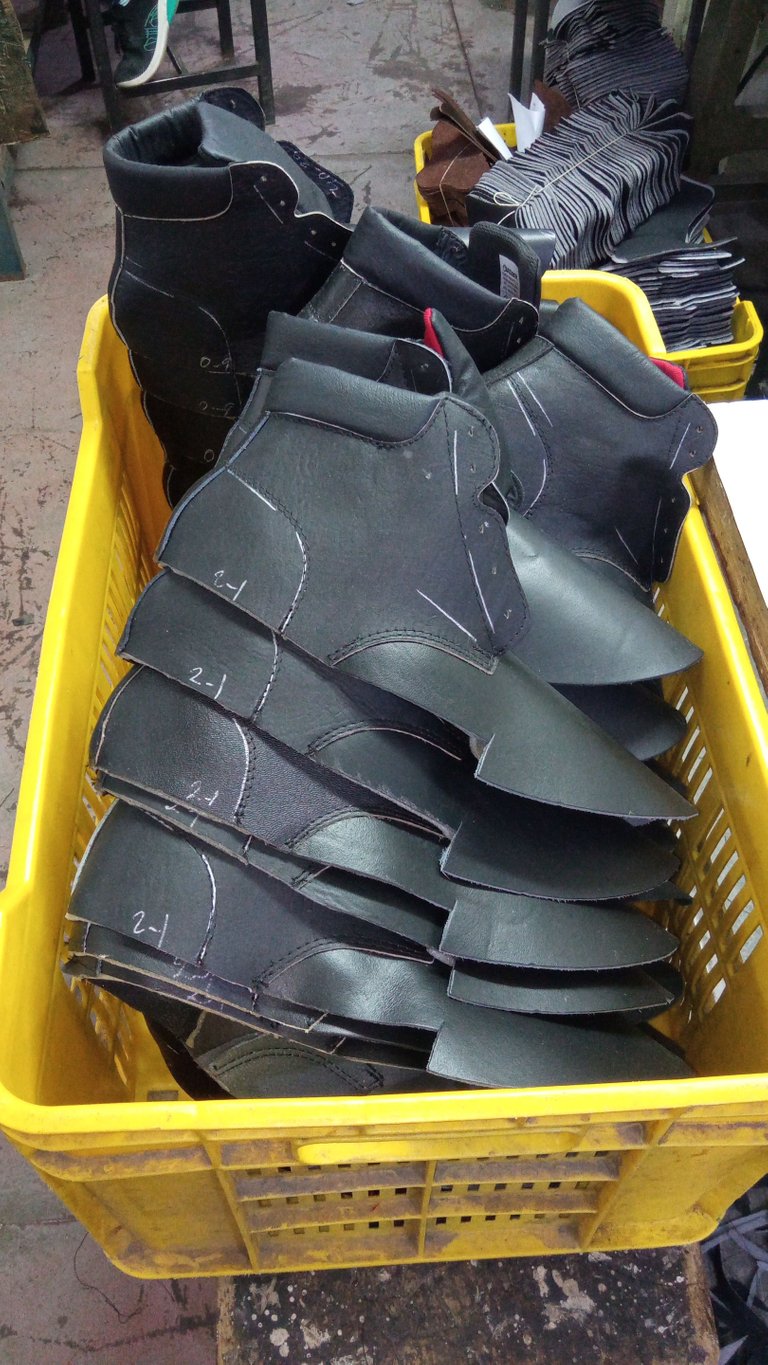
- Luego de haber ensamblado las partes, pasan a otra área en dónde se le meterá la horma correspondiente y así colocar los otros elementos que la faltan.
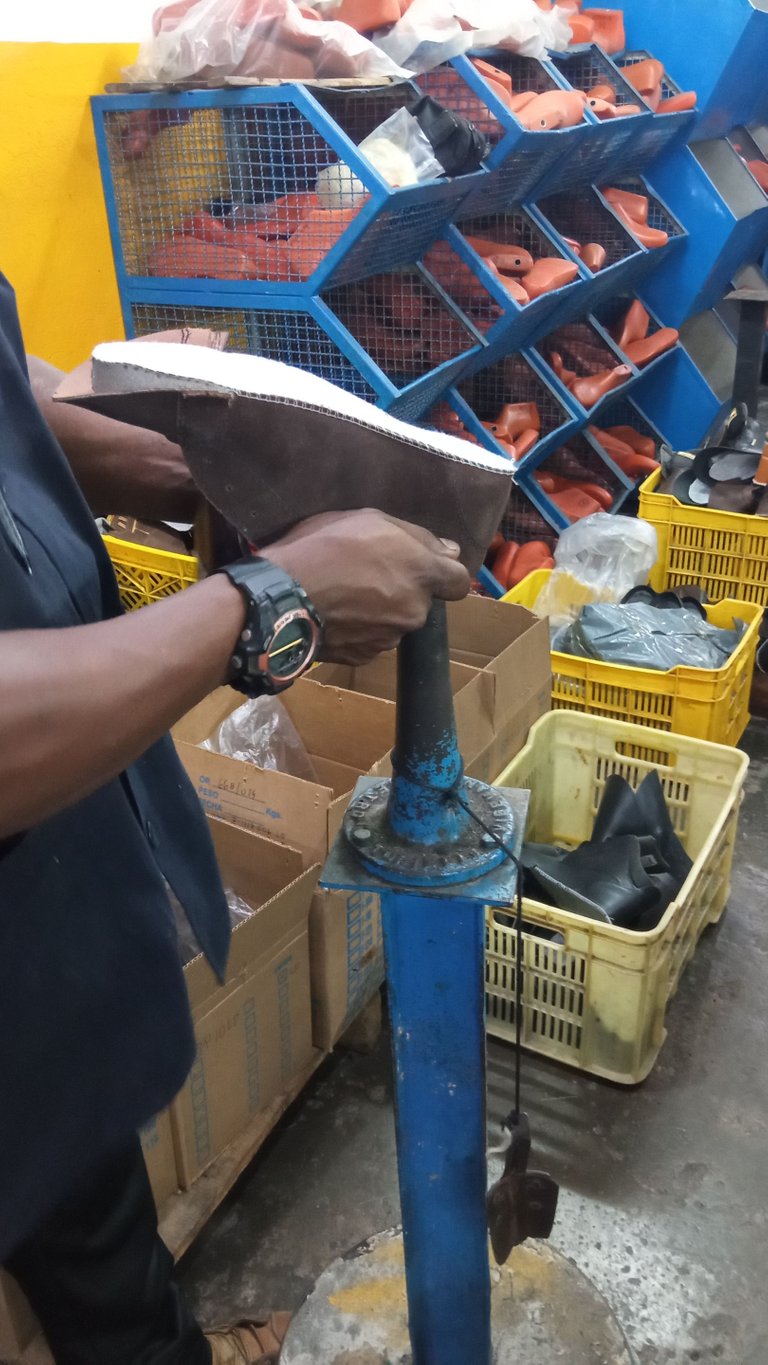
- Algo que me pareció bastante curioso es que dejan reposar la pega para que surta efecto, me comentaron que las que no son necesarios de hacer eso es porque son malas. Bueno, luego de anexar la horma se le coloca la punta de seguridad que antes se le llamaba punta de hierro pero que hoy día se produce es de policarbonato. Se le coloca en la punta de la bota, se le añade pegamento, se deja reposar y posteriormente se lleva a una máquina dónde calienta esa parte para activar la pega, después se lleva a otra máquina para estirar bien el cuero y que todo quede perfectamente forrado.
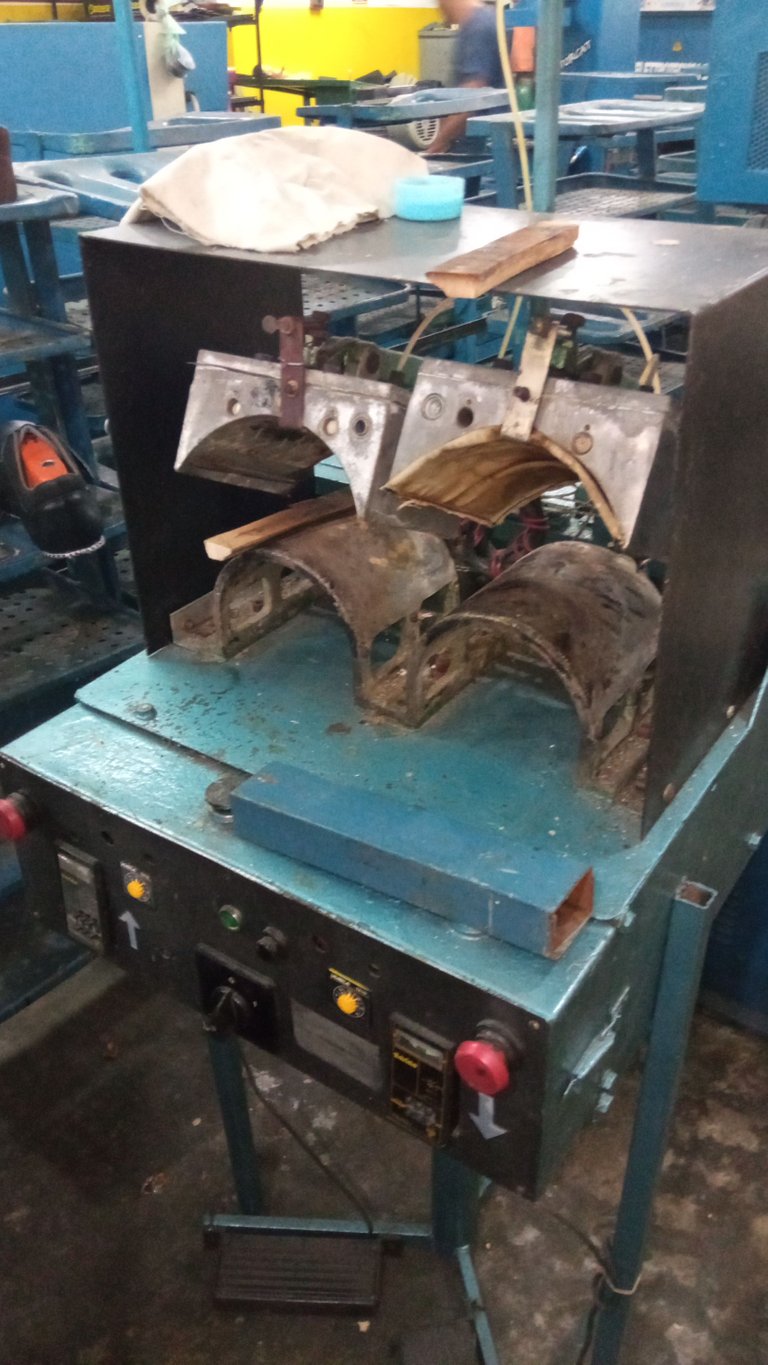
🏭
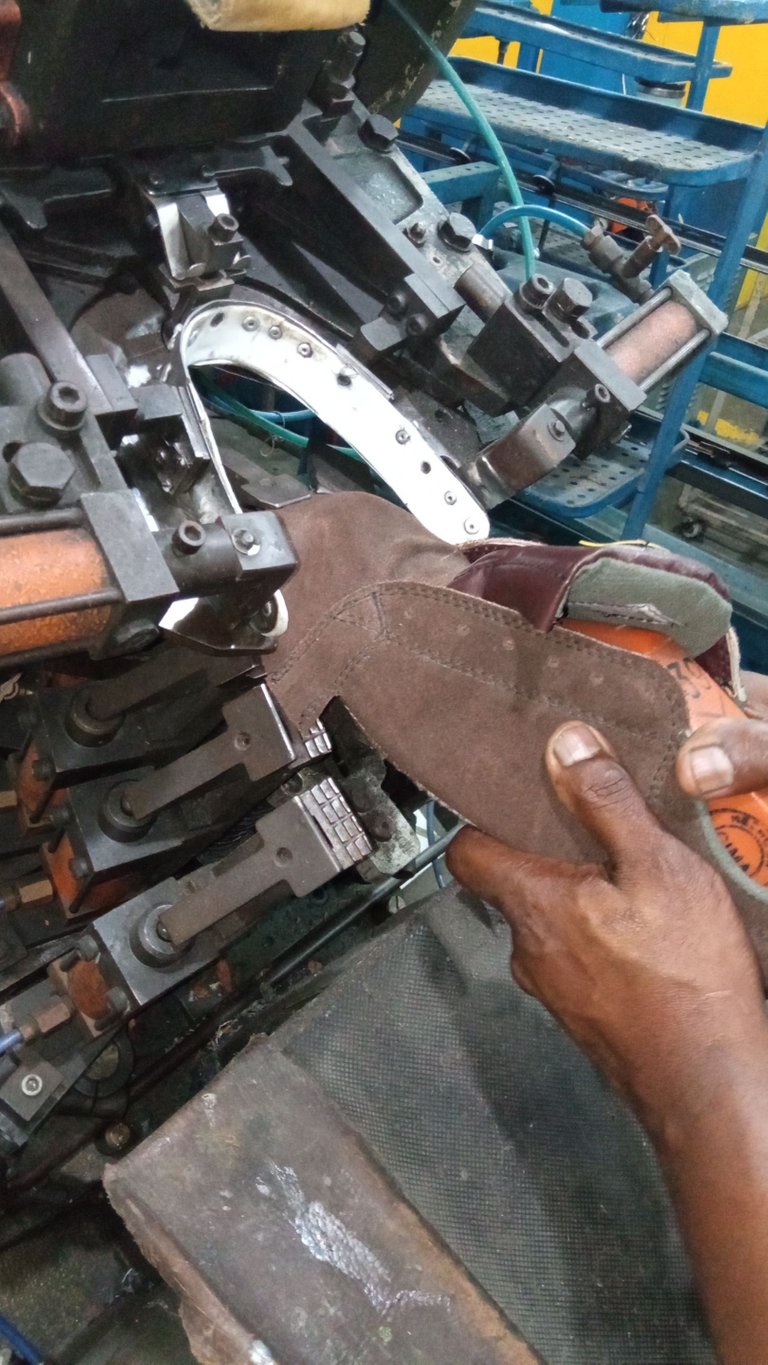
Hubo unos pequeños fallos técnicos y no pude documentar en foto el proceso de como colocaron la suela, pero se los explicaré aquí rapidito.
- Mediante una máquina que gira continuamente y posee una lija, se pasan por ahí tanto la la suela por la parte de adentro, como la bota por la parte de abajo, esto con el fin de obtener fricción ya que el cuero es muy liso y el pegamento no funcionaría de manera óptima si no se le realiza este proceso; ya habiéndola pasado por la lija, se le aplica el pegamento y se deja aproximadamente 10 min.
- Posteriormente se inició un proceso de vulcanizado el cual consta de calentar y luego enfriar el calzado, es por ello que primeramente se meten por separado la suela y la bota a un horno para que caliente y active el pegamento, cuando se haya realizado esto se juntan las dos partes y se meten a una prensa de aire dónde se compactará la suela con la parte superior de la bota y de ahí va a una cámara de frío para terminar de sellar y culminar el proceso de vulcanizado.

🏭
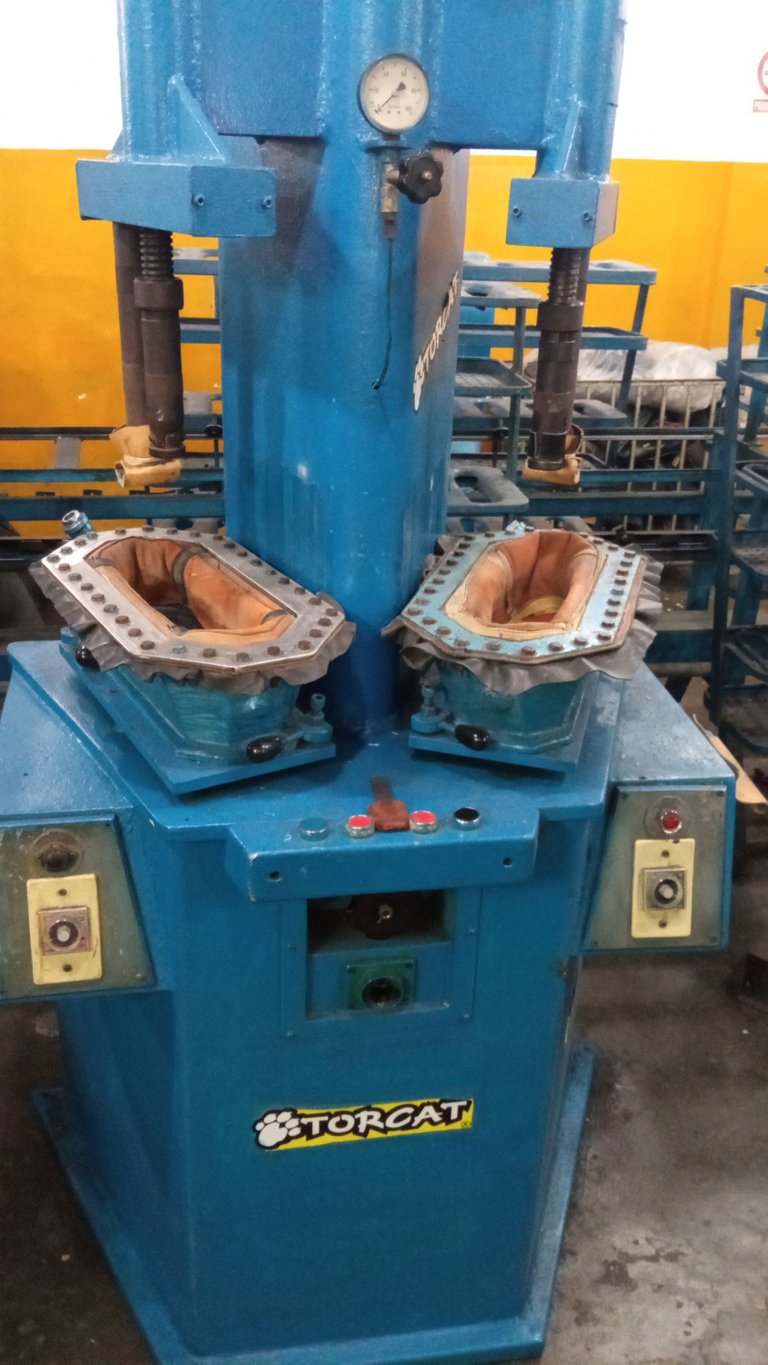
🏭
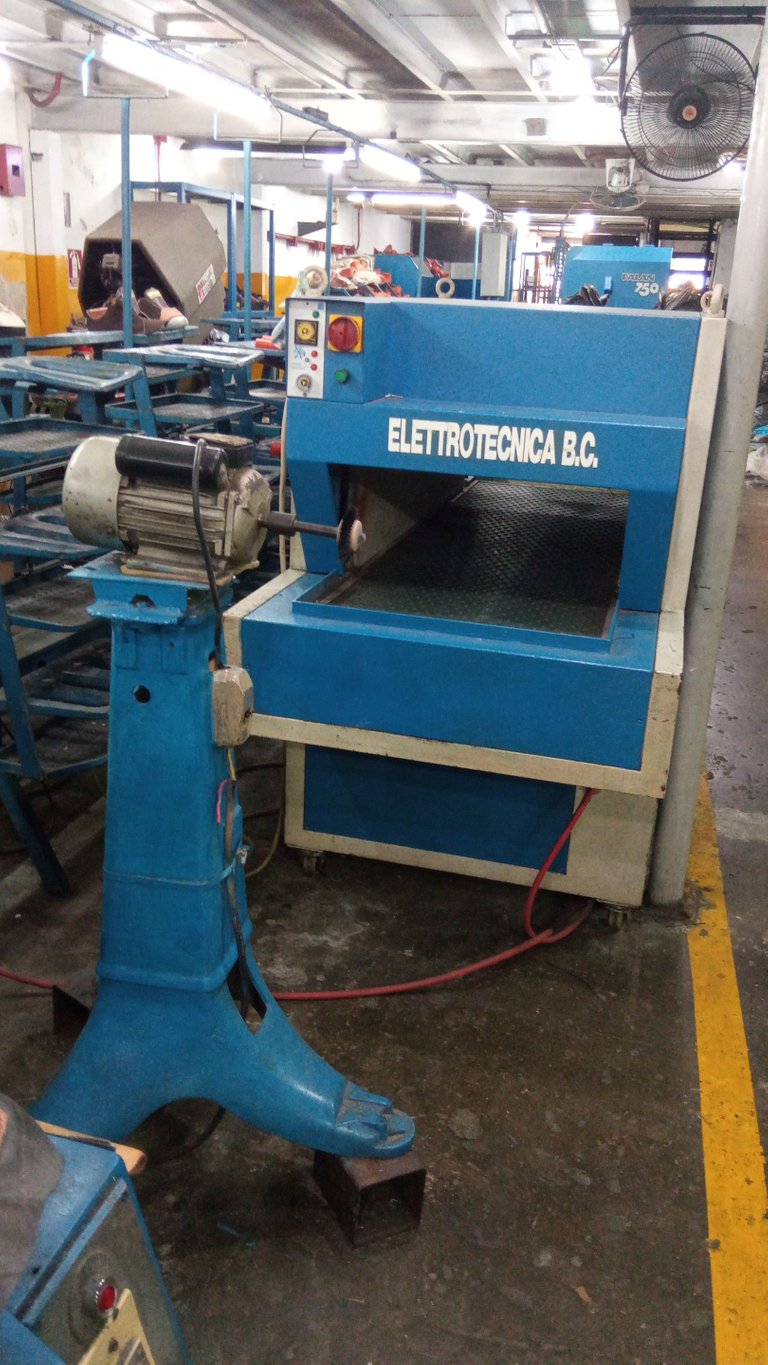
- Ahí ya la bota está realizada y funcional, pero antes de salir a la venta un artesano la cose para dar un extra de seguridad.
Está también la opción de agregar una suela de metal si el cliente así lo quiere.

🏭
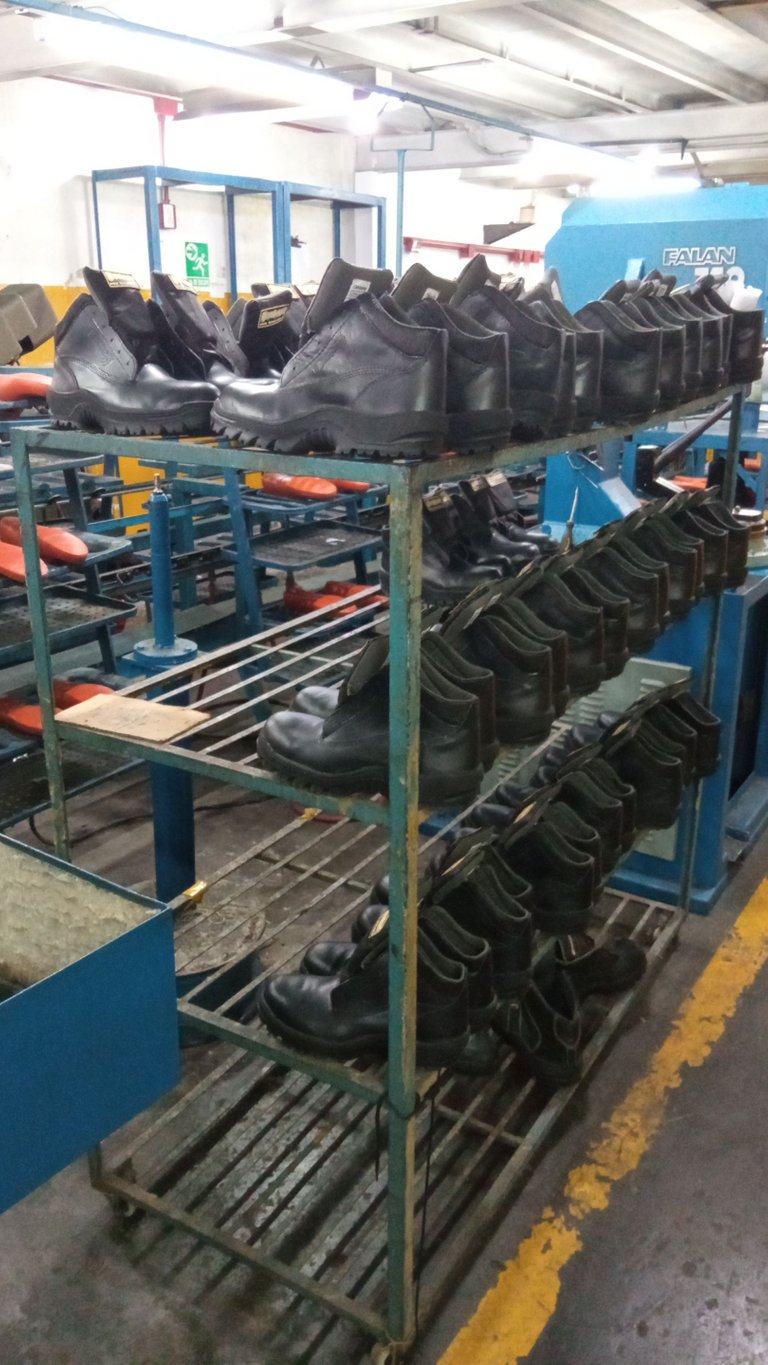
No se me ocurrió tomar fotos a los otros modelos que tienen, me enfoqué solo en la producción que estaban haciendo, sin embargo les aseguro que hacen botas muy lindas, de hecho su calzado de seguridad también son bastantes casuales, se han preocupado por mantener una estética en su producto, tienen unas combinaciones de colores bastante atractivas que se lograrían adecuar a la identidad institucional de cualquier empresa.
Nunca había estado en lugar donde hubiera una línea de producción así, me imagino todos esos puestos llenos con cada quien enfocado en la labor que le toca, tipo años 20. Hoy día creo que la mayoría de las industrias tienen procesos más automatizados, pero aquí en esta fábrica el proceso es bastante artesanal.
Otra cosa que me pareció curioso es la pasión con la cual hablaban los zapateros artesanos, es algo que muy raro puedo ver en una persona, que realmente disfrute lo que hagan, eso fue lindo porque son profesionales que llevan toda una vida dejando un pedazo de si para cada calzado; una labor que seguramente ha salvado a más de uno por ahí.
Cuéntame, ¿has estado alguna vez en alguna fábrica?, si es así déjame saber en los comentarios tus impresiones sobre ellos, y si no lo has hecho aún dime qué tipo de fabrica te gustaría visitar.
Hello dear *Hivers happy start of the week, I hope it has been a very productive day full of many blessings. On this occasion I will be sharing with you a visit I had today to a place where I will be attending recurrently. I went to a factory where Industrial Safety footwear is produced, that is, shoes, boots and boots to work in industries. This type of footwear is used to prevent accidents at work, because being continuously near machinery or heavy goods, there is always the risk of an accident at work, and feet often have a high probability of being affected. Until today it was not something I was interested in, but now I see it from a different point of view. Currently the factory is reopening its doors after some time closed.
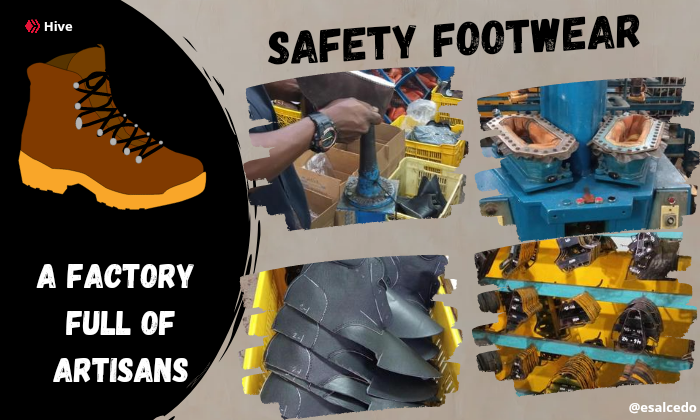
When I arrived there were some artisans who had worked there for many years, most of them mature people but with very good vitality. In spite of having industrial machinery, all the processes need the manipulation of man and this is the importance of each one of them.
I must confess that I was very gratified to see how they created a shoe from scratch, we always see the finished product, but not the processes it must go through before it is ready. It was exciting to see the step by step and even curious I put my hand to lend "support " in the manufacture of some boots.
*I will quickly explain the production process.
- The first thing is according to the specifications of the foot of the person, look for the exact measures to cut the leather of the footwear, this is done in the factory by means of some molds that by the inferior part have some blades to cut the leather, they are placed on top of the same one on a press machine and it is lowered until the cut is made. After that, each piece is checked and numbered.

🏭

🏭

- From there it goes to the sewing workshop where all the parts sent by the artisan who had previously cut them are assembled, a sole is added and they begin to be joined together. Here another team of artisans glue and sew all the pieces together to form the footwear.

🏭

- After having assembled the parts, go to another area where you will put the corresponding last and place the other missing elements.

- Something that seemed to me quite curious is that they leave the glue to rest so that it takes effect, I was told that those that are not necessary to do that is because they are bad. Well, after attaching the last, the safety tip is placed, which used to be called iron tip but nowadays it is made of polycarbonate. It is placed on the toe of the boot, glue is added, it is left to rest and then it is taken to a machine where it heats that part to activate the glue, then it is taken to another machine to stretch the leather well so that everything is perfectly lined.

🏭

There were a few small technical glitches and I couldn't photo document the process of how they placed the sole, but I'll explain it here real quick.
- By means of a machine that rotates continuously and has a sandpaper, the sole is passed by there so much the sole by the part of inside, as the boot by the part of below, this with the purpose of obtaining friction since the leather is very smooth and the glue would not work of optimal way if this process is not carried out; already having passed it by the sandpaper, the glue is applied and it is left approximately 10 min.
- Subsequently, a vulcanization process was started, which consists of heating and then cooling the footwear, that is why first the sole and the boot are put separately into an oven to heat and activate the glue, when this is done the two parts are joined and put into an air press where the sole is compacted with the upper part of the boot and then goes to a cold chamber to finish sealing and complete the vulcanization process.

🏭

🏭

- There the boot is already made and functional, but before going on sale a craftsman stitches it to give an extra security.
There is also the option of adding a metal sole if the customer wants it.

🏭

It did not occur to me to take pictures of the other models they have, I focused only on the production they were doing, however I assure you that they make very nice boots, in fact their safety footwear are also quite casual, they have been concerned about maintaining an aesthetic in their product, they have some very attractive color combinations that would fit the institutional identity of any company.
I had never been in a place where there was a production line like this, I can imagine all those full positions with everyone focused on the work they have to do, like in the 1920s. Nowadays I think most industries have more automated processes, but here in this factory the process is quite artisanal.
Another thing that I found curious is the passion with which the artisan shoemakers spoke, it is something very rare to see in a person, that really enjoys what they do, that was nice because they are professionals who have spent a lifetime leaving a piece of themselves for each shoe; a work that surely has saved more than one around.
Tell me, have you ever been to a factory, if so let me know in the comments your impressions about them, and if you haven't yet tell me what kind of factory you would like to visit.

Congratulations @esalcedo! You have completed the following achievement on the Hive blockchain and have been rewarded with new badge(s):
Your next target is to reach 800 comments.
You can view your badges on your board and compare yourself to others in the Ranking
If you no longer want to receive notifications, reply to this comment with the word
STOPCheck out the last post from @hivebuzz:
Support the HiveBuzz project. Vote for our proposal!